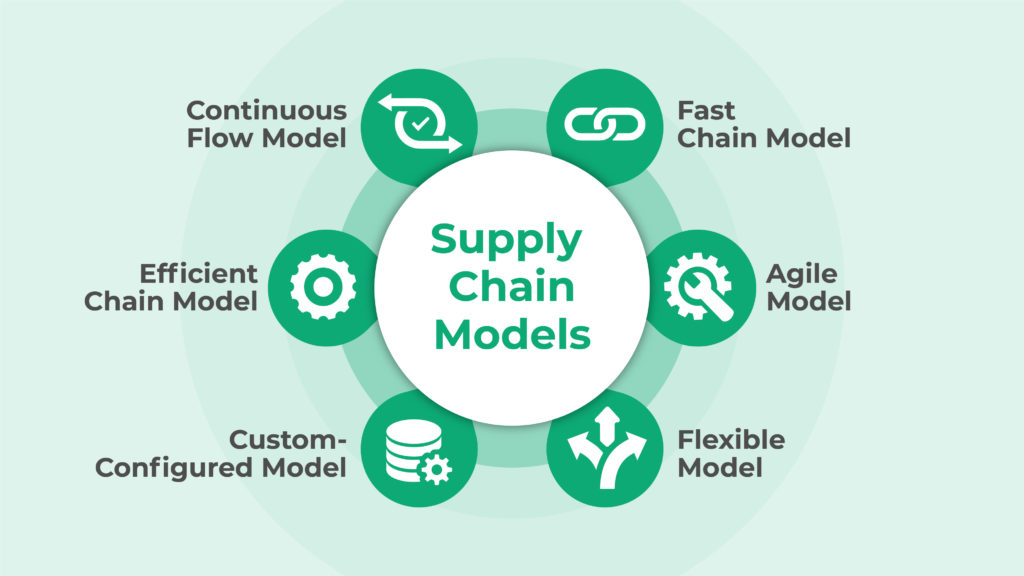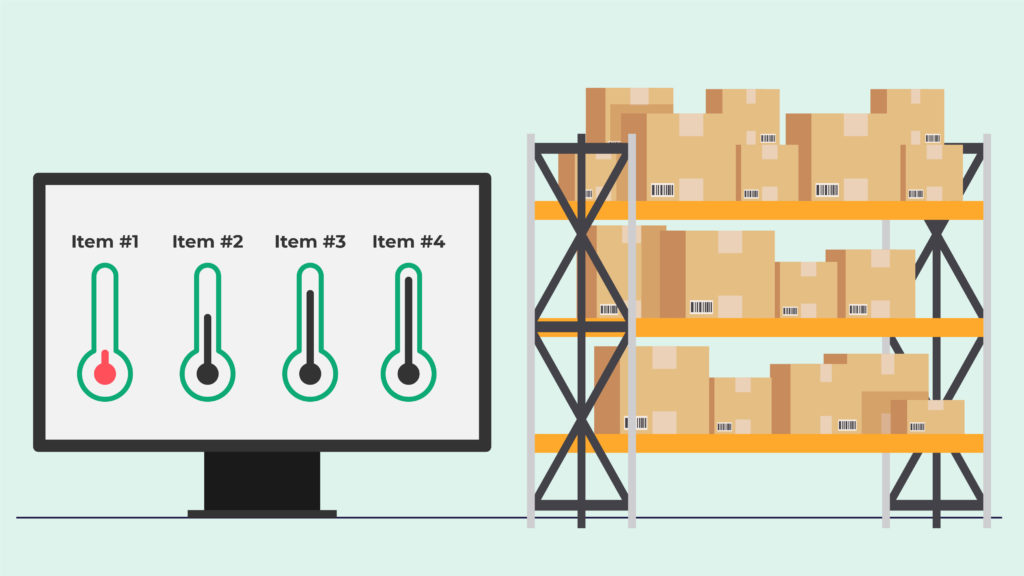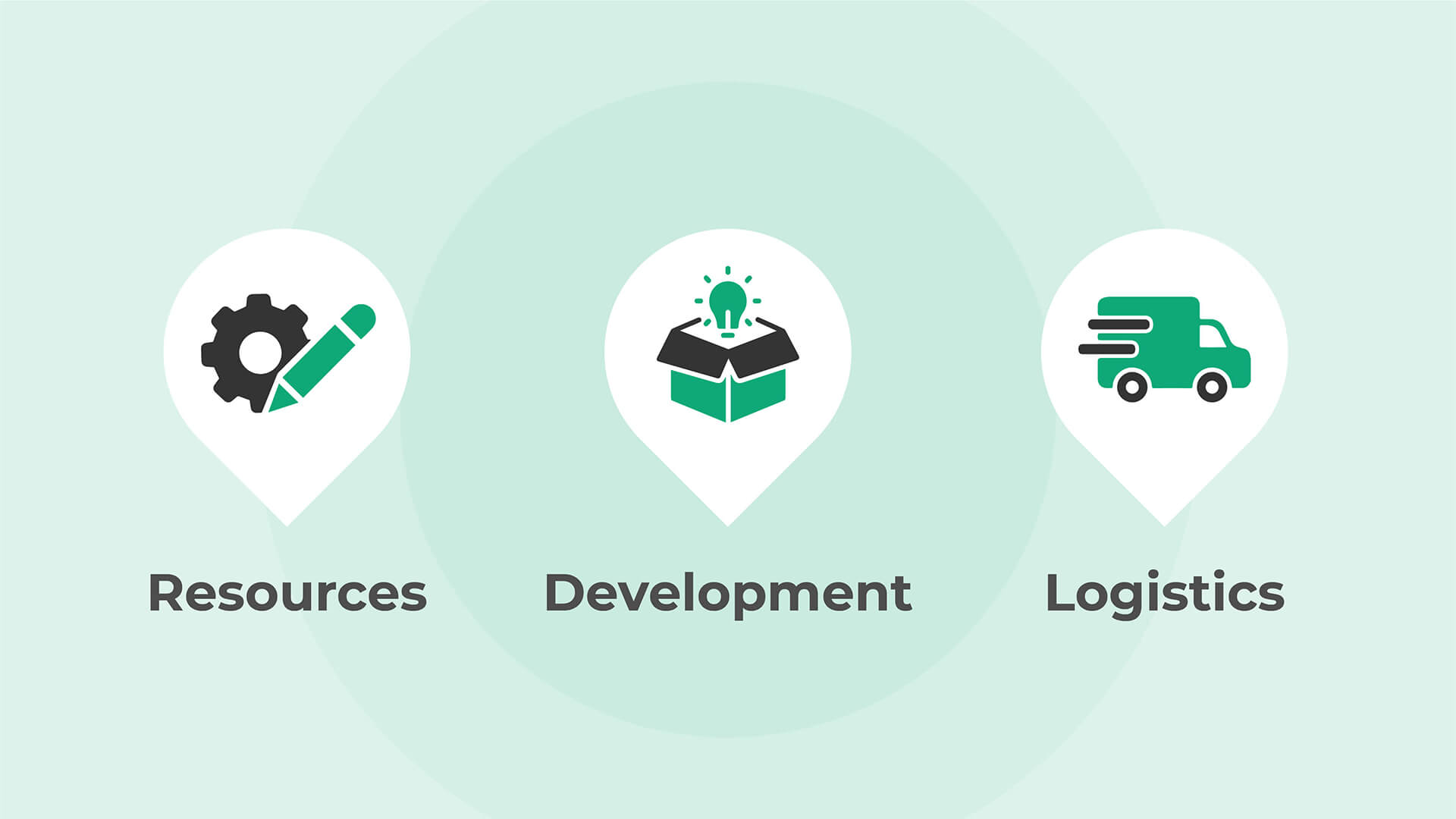Supply chain management is vital to any business. It’s defined as the system encompassing the logistics of producing and selling commercial goods, including resource acquisition, product development, and delivery.
Traditional Supply Chain Models (and Their Meaning)

Supply chain management is usually broken down into six separate categories. All six supply chain models have the same goal, rely on similar components, and fit into one of two categories: efficiency or responsiveness. Each supply chain model can have a primary focus on either. Understanding these different supply chain models makes it easier to manage and protect the supply chain within your organization.
The Continuous Flow Model
The continuous flow model or continuous model is best for mature industries that produce a uniform set of goods and expect demand stability from their market. Goods are in a continuous flow, and the entire chain is built for a continued, scheduled delivery of goods.
A good example of the continuous flow model would be PepsiCo. This mature company has a large customer base with little variety in demand, regardless of market conditions. Logistics has been designed so that a continuous flow of ingredients is received to produce its products and restock its vendors continuously.
The Fast Chain Model
The fast chain model is used by businesses that manufacture finished products with a short market lifecycle. It’s a suitable model for businesses where products are changed frequently and delivered to the market quickly before customer demand drops, and the trend loses relevance, like budget fashion industries.
Adidas is a prime example of this supply chain model. They set up new delivery systems and supply lines regularly and create new shoes and products as quickly as possible to sell apparel to meet high demand peaks before the trend changes. End-to-end supply chain efficiency is extremely important to managers in this field.
The Efficient Chain Model
The efficient chain model is used by supply chain managers operating in highly competitive markets. They must strive for high overall equipment efficiency at all times to retain their competitive advantage, which is why they opt for the most cost-effective model when determining their supply chain strategies. Emphasis is placed on proper inventory management and maximizing the outputs of the labor force and production processes.
Nestlé is a good example of a brand that requires an efficient model. Because their margins are thin and the brand operates in very competitive markets, they must reduce costs and keep vendors well-stocked at all times.
The Agile Model
The agile model demands responsive supply chains to sell trendy products during peak demand. This model tracks market demand in real-time, co-manages its inventory, utilizes collaborative product designs, and emphasizes end-to-end efficiency. The agile model is suited to businesses that sell specialty products that require extra care in transportation or design, like luxury fashion items.
Unlike the efficient chain model that requires high volumes, the agile model is only profitable until a threshold of volume is met. The market is highly sensitive and subject to unpredictable demand or demand variation in this case. The supply chain network has to remain flexible and alert at all times. ZARA is an example of a brand that follows the agile model. Designers are quick to spot trends, draw up new designs and ensure that the entire chain responds as quickly as possible.
The Custom-Configured Model
The custom-configured model combines the agile and continuous flow models. It’s used in industries where multiple custom configurations are required, e.g. brands like VANS that invite customers to log on to their site and design their own sneakers. The market remains fairly consistent, with a few predictable demand peaks throughout the year, but the company remains flexible just in case a particular customization falls out of vogue.
Providing custom configurations means that the assembly and production plants must change their setup regularly, hence the need for agility. This model is sometimes used for prototype design and small batches, e.g. limited release products. Customer satisfaction remains one of the most important business objectives for this model.
The Flexible Model
The flexible model allows businesses to meet peaks of high demand and long periods of low demand. Suppliers are diversified and hired on a seasonal contract to ensure a steady flow of raw materials as required, and factories use automation wherever possible.
Staples is a good example of a company that follows a flexible supply chain model. The company’s supply chain strategies reflect the high seasonal demand for school supplies after the summer vacation and ensure that stores are well-stocked during the rest of the year when demand is lower.
How Do I Choose the Right Supply Chain Model?

Supply chain modeling is complex. While the six basic supply chain models are good, the most productive supply chains are the ones that have been hybridized to meet the specific needs of the company and the customers they serve. Choosing the right supply chain model for your business means carefully evaluating various supply chains against your industry, value proposition, and business objectives.
Having the right supply chain model in place is an important aspect of your business. However, the people, technology, and processes that manage your supply chain should also be considered when selecting a model. By considering both, your business can foster resilience, mitigate risk exposure and improve your competitiveness in the market.

10X ERP helps provide visibility into your supply chain so decisions can be made quicker and more accurately. Let us know how we can help your business reach its maximum profitability!
